There is a noise growing around Florian Wirtz.
Liverpool’s £116million ($156m at the current rate) summer signing has not hit the ground running in the way their supporters will have hoped and after starting in successive defeats to Crystal Palace and Galatasaray over the past six days, questions are being asked.
At the start of the week, ex-England captain Wayne Rooney, speaking on his BBC podcast, said he thought Wirtz “actually damages the balance” of how Arne Slot’s side play. Former Liverpool defender Jamie Carragher has suggested dropping the 22-year-old forward.
“He’s just not at the races at all,” Carragher told U.S. broadcaster CBS on Tuesday. “He’s a young boy coming to a new league, and he has plenty of time to go as a Liverpool player. But right now I think he needs to come out of the team, and Liverpool need to get back to what they were last season and try and build some confidence.”
To an extent, Wirtz is a victim of his own price tag — players signing for what was, at the time, a British record fee are expected to produce immediately, even if they are young (he was still 21 in May) and moving to another country and adapting to a new team and league.
Wirtz himself said he was unconcerned about the fee he cost, but while his slow start was not a point of discussion when Liverpool won their first five games of the season — albeit not always convincingly — with him in the starting line-up, during these two recent defeats he has inevitably come under scrutiny.
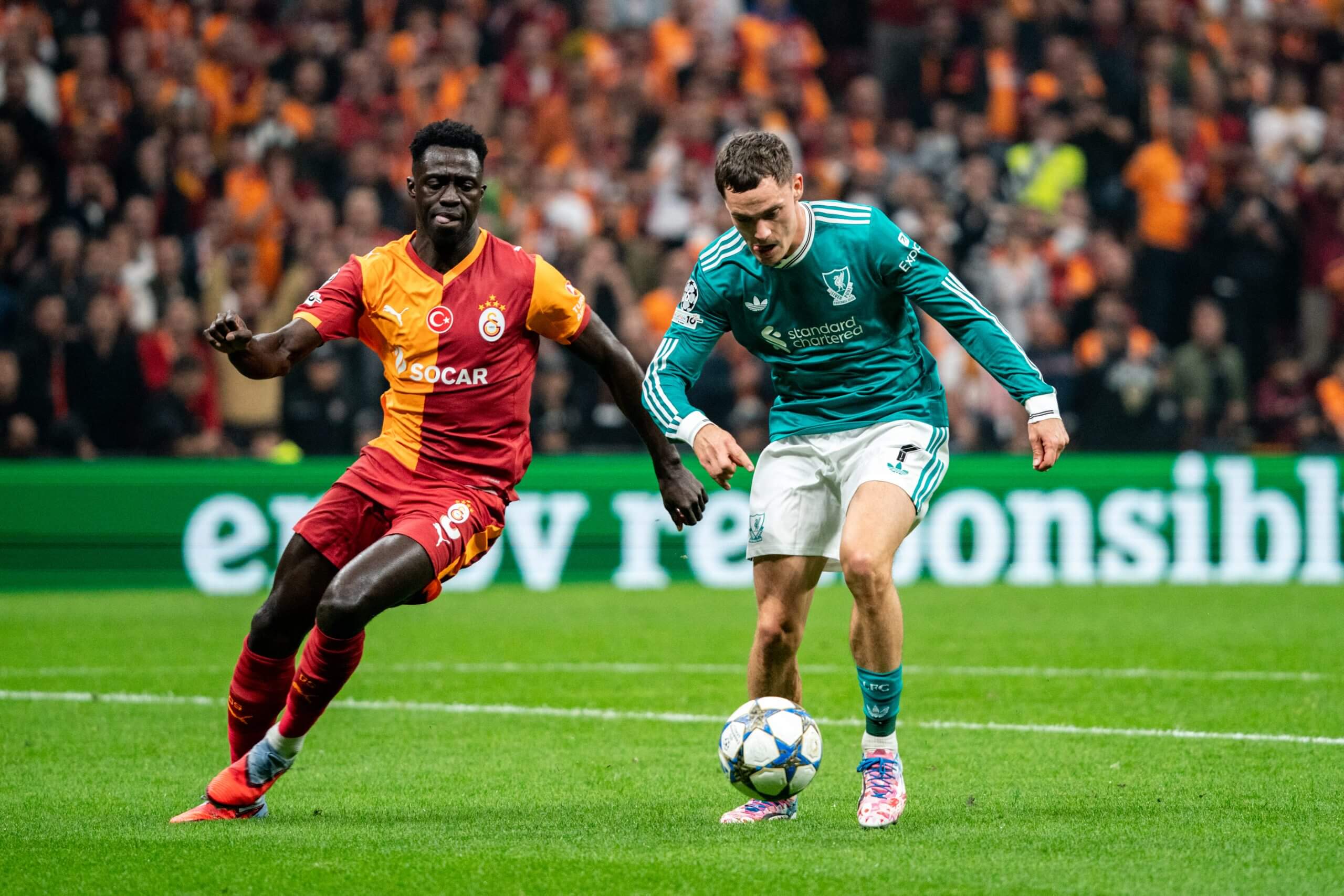
Florian Wirtz struggled to make an impression against Galatasaray on Tuesday (Yagiz Gurtug/Middle East Images/AFP via Getty Images)
Away to Palace on Saturday, he was deployed on the left of a front three and given a free role to drift inside, a significant and rare tactical tweak from Slot which did not work in his side’s 2-1 loss. Then, in the Champions League in Turkey three days later, the German got restored to his favoured No 10 role but was one of several Liverpool players who struggled.
Wirtz’s displays to date have not been uniformly poor — far from it. There have been moments where his quality has shone through, particularly against Atletico Madrid in the 3-2 Champions League win at Anfield last month, but there have also been long periods of games where he has been peripheral.
Against Galatasaray, for example, he produced a couple of brilliant passes, creating two of the few chances Liverpool had in the second half of their 1-0 defeat.
First he released Alexander Isak, who took his shot too early…

… and then he found Conor Bradley with a cross the right-back could not direct on target.
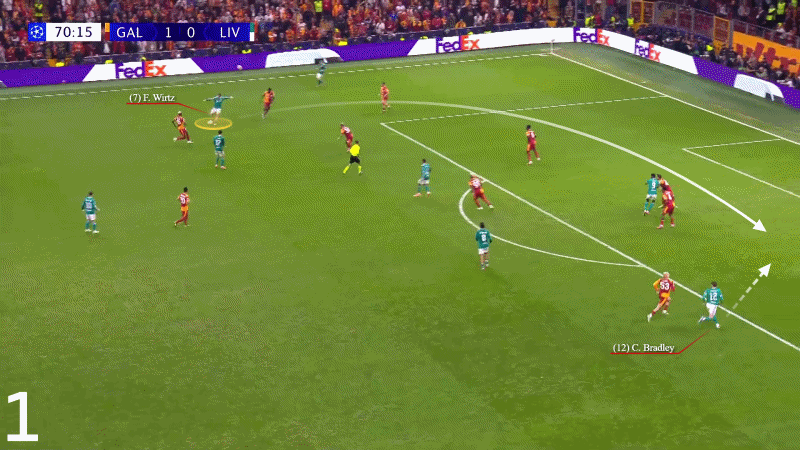
Wirtz did assist Hugo Ekitike’s goal against Palace in August’s Community Shield, but in competitive games, he has become the poster boy for social media’s ‘007’ joke — a reference to the fact that he had zero goals and zero assists in his first seven Liverpool appearances (a figure now stretching to eight).
When you analyse his performances, there have been opportunities in each game for him to break that streak.
In all competitions this season, including that champions vs FA Cup winners showpiece at Wembley, Wirtz has created 21 chances. It is a tally only matched among Premier League players by Everton’s Manchester City loanee Jack Grealish.
Mohamed Salah hit the post against Atletico when he should have scored after being played in by Wirtz.

Earlier in the same game, after encouraging link-up play with Isak — a theme on the night — Jeremie Frimpong mis-kicked a great chance to put Liverpool 3-0 up.

Wirtz himself ought to have done better when he got on the end of Dominik Szoboszlai’s delivery away to Palace.

The issue is that while Wirtz has been busy enough in games, it doesn’t feel like he has been particularly effective.
The 17 chances he has created in the Premier League and Champions League only add up to an expected assists figure of 1.4, so he is not carving out high-quality opportunities.
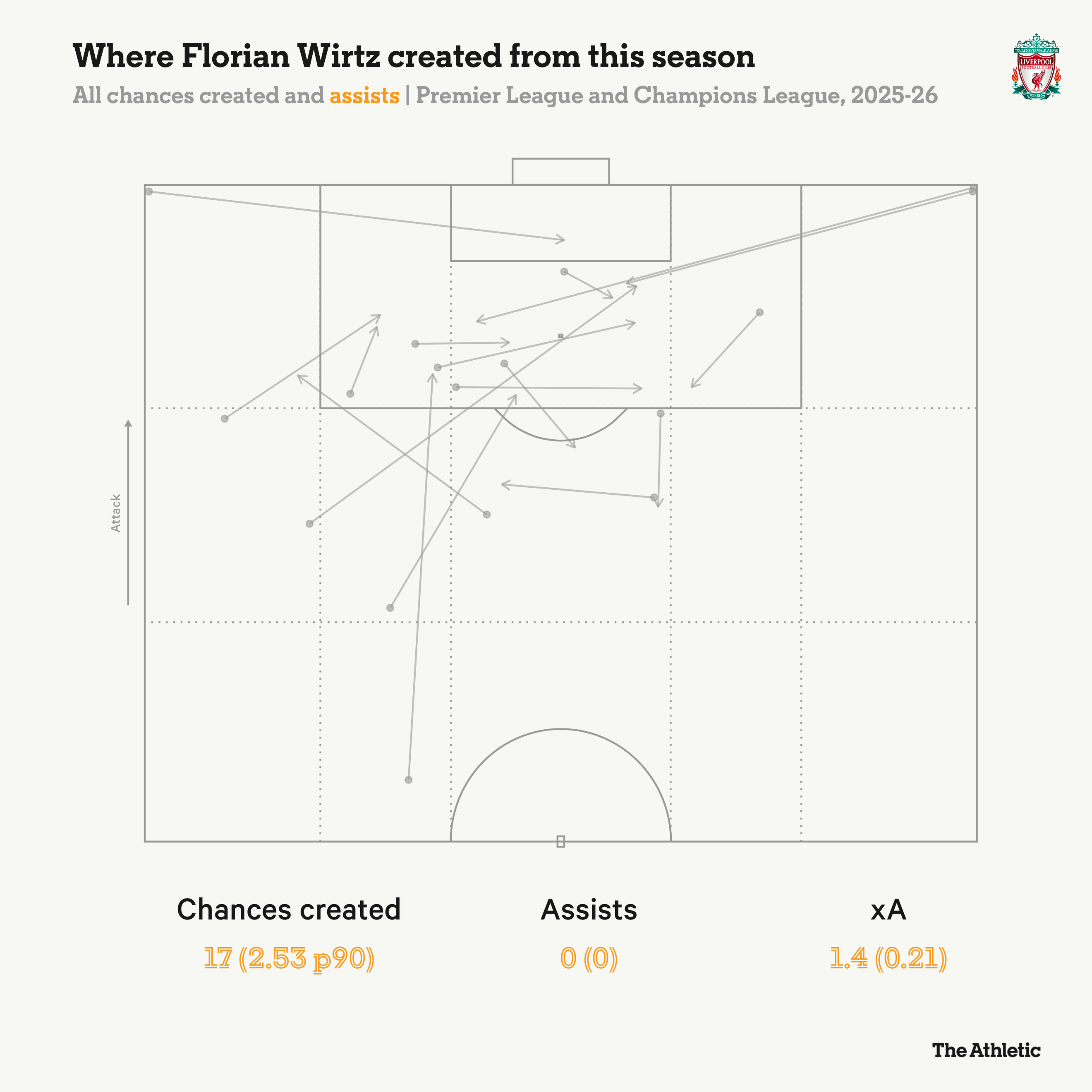
When you break it down further, only 10 of his 21 total chances created have come in the six Premier League matches. Seven of those have come from open play, which is the same as the total number of opportunities he has made in his two Champions League appearances.
It further highlights the idea he is battling to adapt to a new league.
Wirtz has struggled to deal with the physicality of opponents in England. Too often, he has been eased off the ball when in possession, or delayed a shot when in a promising position, leading to it being blocked. He is a very different No 10 to Szoboszlai, who he has replaced in that role, and while he is covering a lot of ground he cannot impose himself physically the way the Hungarian can.
Last season, Luis Diaz (playing as the No 9) and Szoboszlai (as the No 10) were the leaders of Liverpool’s press. That front two has now changed, with Diaz leaving for Bayern Munich over the summer, and Wirtz plus his fellow newcomers Isak and Ekitike are still adjusting to the way Liverpool operate off the ball, which has impacted the team’s overall structure and contributed to their defensive issues.
Wirtz’s form is not the sole reason Liverpool are not at their best. They are not attacking with any fluidity: neither Salah nor Cody Gakpo is anywhere near top form and Isak is still getting up to speed having missed all of pre-season before his belated transfer from Newcastle.
Behind the German, Ryan Gravenberch is playing well, but the Dutchman’s midfield partner Alexis Mac Allister is labouring. The Argentina international is arguably Liverpool’s most important player in the heart of the pitch as he is their tempo setter, but he has not completed 90 minutes for the club since April and his form has also been shaky.
Wirtz is a busy player. He is constantly moving and finding space, but part of this early-season adjustment after leaving Bayer Leverkusen is his new team-mates adapting to his style of play, too.
This next example, from early in the second half on Saturday, is the type of position Liverpool want to get him into…

… but there have been plenty of opportunities where the ball could have been fed to him in similar positions and hasn’t been. His touches per 90 minutes, although it’s a very small sample size, are significantly down this season compared to his 2024-25 totals at Leverkusen. Whether that is his team-mates not looking for him, or because his slight, 5ft 9in (176cm) frame means they are worried about turnovers, is difficult to know.
Wirtz’s touches so far this season have been far more spread out around the pitch than you would expect from a lone No 10, and are significantly different to where he was effective for Leverkusen. As the graphic above shows, his chance creation has been almost entirely from Liverpool’s left, too.

Wirtz has looked most effective when space has opened up.
In the second halves against Arsenal and Burnley, as well as in the Atletico game, he has thrived when he has been able to carry the ball forward in transitional moments. On two occasions against Arsenal, an opportunity evaporated due to Salah’s touches here…

…and here.

Following his best performance so far, against Atletico, Slot offered further explanation for why patience may well be the key.
“I can see with him also that he is getting fitter and fitter and adjusting more and more to us, which is normal,” Slot said. “You need a bit of time to adjust. We all know how much quality he has but sometimes people forget that he is a 22-year-old that goes, for the first time, abroad. Your whole life is changing. All the things that are normal to you are not normal anymore because everything is different, and that sometimes costs energy as well.
“Combine that with going to a new club, a new playing style because (Bayer) Leverkusen played 3-4-3 and we play 4-3-3 and so we ask a bit more from him off the ball and defensively as well. But I can see him growing more and more, and I think that is what you can expect from a quality player, who always adjusts to what he needs. And he and the team will get better and better.”
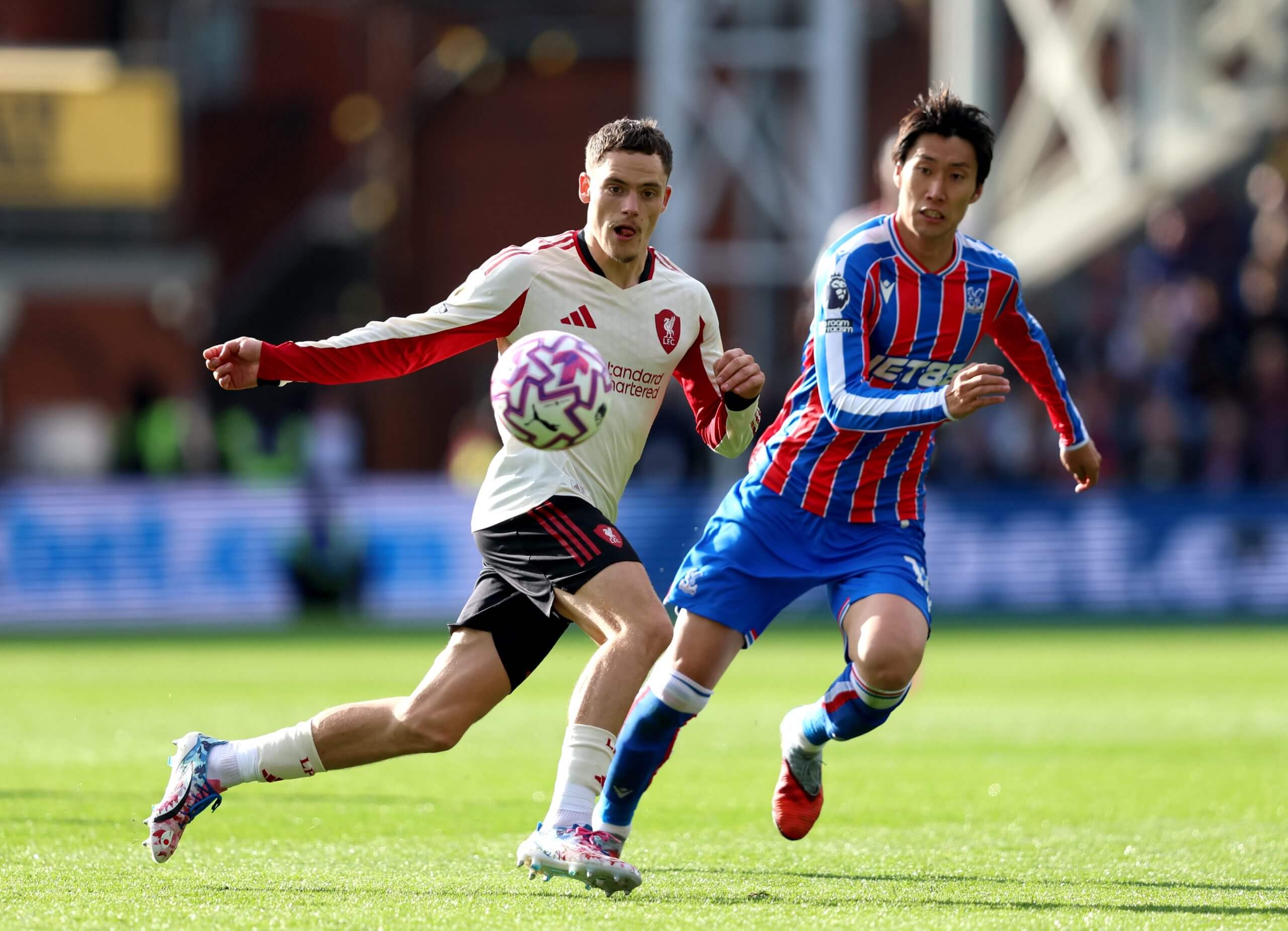
The Premier League’s physicality has been an issue for Wirtz in these early weeks (Tom Dulat/Getty Images)
The lack of continuity is not helping either, whether that’s his position changing or the personnel around him. He is also not the only new addition trying to find their feet, with Frimpong, Kerkez and Isak all having slow starts to their Anfield careers.
Continuity was Liverpool’s strength last year on the way to the title but as Slot juggles his new-look squad, relationships are taking time to build. This is a team transitioning from one identity to another: Wirtz is central to that process, but patience is needed.
The view from Germany: Liverpool need time to become attuned to Wirtz’s genius
Outside of the obvious issues, such as the higher standard of opposition in the Premier League, the main difference between Bayer Leverkusen’s Florian Wirtz and Liverpool’s version seems to be what is happening around him.
In Wirtz’s final two years in Germany, Leverkusen were a slick, well-oiled-machine of a side, built with his abilities in mind. The forwards deployed in front of him, either Patrik Schick or Victor Boniface, were drifting No 9s, each with No 10-style abilities, capable of combining with him in a range of situations.
The midfielders behind him, anchored by Granit Xhaka, were expert in progressing the ball forward — quickly, and into the positions which made him most dangerous. Added to which, wing-backs Alejandro Grimaldo and Frimpong, the latter now with Wirtz at Anfield, were an incredibly dynamic threat, stretching opponents across the full width of the pitch but playing with enough individual variety to pose a range of different questions.
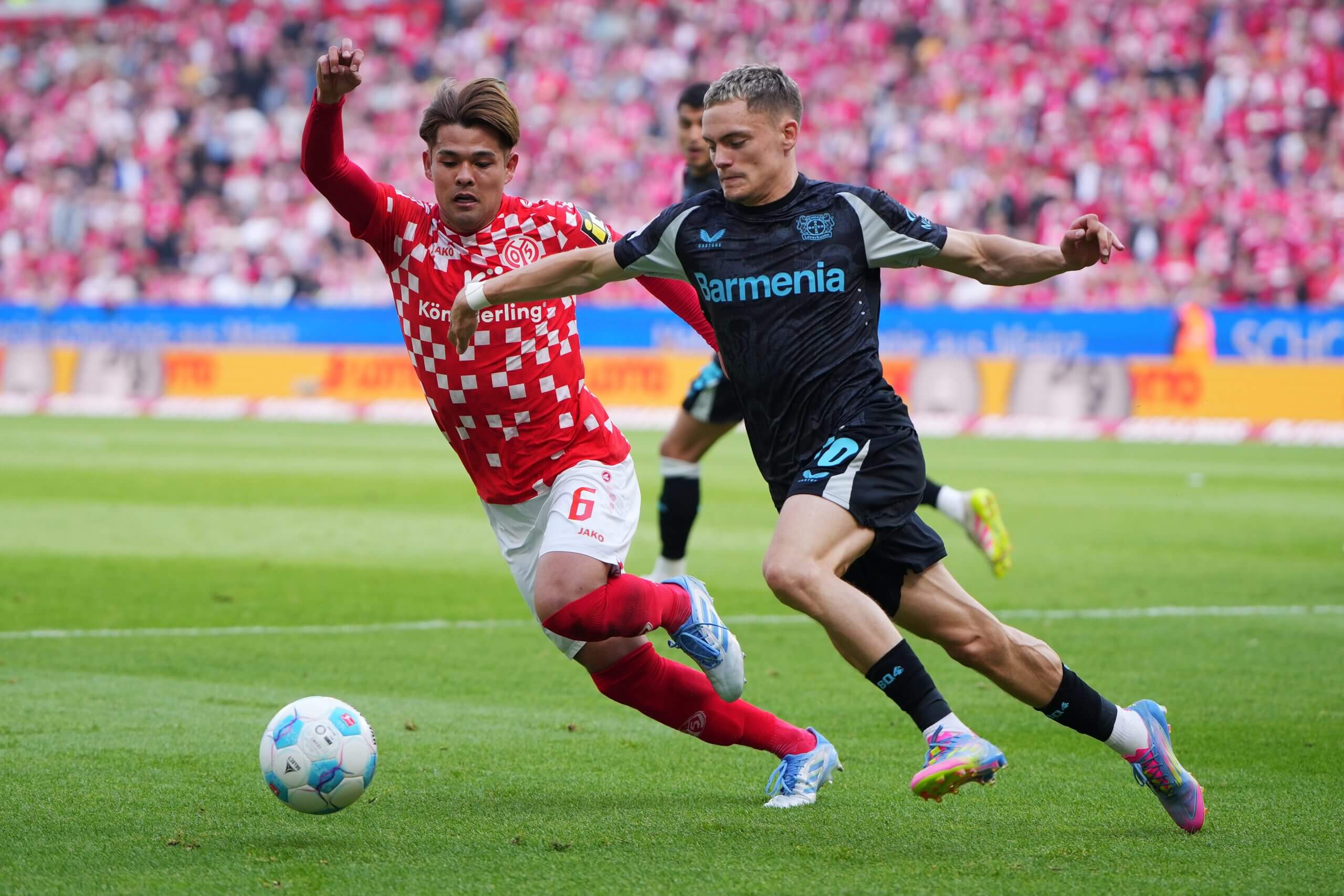
Leverkusen were built around Wirtz (Pau Barrena/Getty Images)
Collectively, every part of that team offered Wirtz something: space, supply or protection.
Liverpool have far more talent in their squad than Leverkusen could ever dream of, but they are not yet attuned to his game in the same way. It sounds contradictory in a sense, because such a big fee should buy a protagonist — a player capable of altering games regardless of tactical cohesion and rhythm — but such soloists do not really exist in the game anymore, or at least not in the way they once did.
Even at its most prominent in Leverkusen, Wirtz’s form was a function of the team — of ball circulation and attacking movement. He was also playing in a much more transitional league, one in which teams pressed and countered in a way that more readily suited his aggressive attacking instincts.
This happened with the German national team, too. Wirtz has often played well for his country, but even then was a diluted version of the way he performed at club level, under Xabi Alonso. There has often been more hesitation in him during those games, less freedom, and those are themes within these first few Liverpool matches, too.
It’s interesting, for instance, to see how often he is receiving possession and almost having to go from a standing start. He is still working hard to find space between the lines, running as persistently as ever, but his moments on the ball tend to be more static and awkward, occurring in isolation almost, rather than as a natural function of how Liverpool play.
His new team do not flow through him as the old one often did. That surely will happen. He is too talented not to succeed, and Slot is too good a coach. But it’s no surprise that with the 2025-26 version of Liverpool yet to fully, convincingly fire, Wirtz is also yet to shine.
Sebastian Stafford-Bloor
(Top photo: Justin Setterfield/Getty Images)
